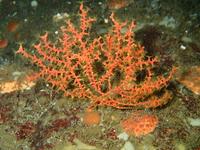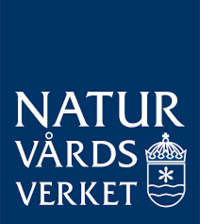REEFS – Researching Ecosystem Functioning in Vulnerable Marine Habitats: Cold Corals in Bratten
Short description
Cold-water corals play a crucial role in marine ecosystems. They create complex structures in deep waters that provide food and shelter, and act as nurseries for many species, including commercially important ones. At the same time, there are large knowledge gaps about how cold-water corals are affected by human activity.
In this research project, we are working to increase our understanding of the role of cold-water corals in the Bratten Marine Protected Area, in the north-west Skagerrak. The aim is also to find out how they can best be conserved and protected for the future while promoting sustainable fisheries.
The project also includes targeted efforts to disseminate knowledge and information about the cold-water corals in Bratten.
Background
Deep-sea cold-water corals play a very important role in cold and temperate marine ecosystems worldwide. As “ecosystem engineers”, they create complex structures in deep waters where they provide food and shelter, and act as nurseries for many species, including commercially important ones.
Although less well known than their tropical relatives, there are more species of corals living in the deeper parts of the oceans. Unlike tropical corals, cold-water corals do not depend on sunlight, living instead by capturing small crustaceans and particles of organic matter that sail down through the water from the surface. This ability allows them to survive and thrive down to 6000 metres depth in our oceans.
As the importance of cold-water coral ecosystems has become better understood, marine protected areas have been established around the world to conserve them. In Sweden, Bratten in the north-west Skagerrak is an important marine protected area covering over 120 000 hectares. The area is home to seven red-listed coral species, highlighting its ecological importance.
This is what we will do
Like many other marine ecosystems, the Bratten area is affected by human activity. Some parts of the protected area are no-fishing zones, but in the majority of the area, fishing including bottom trawling is allowed. The damage caused by increased sedimentation and loss of fishing gear is well documented. To secure the future of these ecosystems, understanding the delicate balance between protecting biodiversity and promoting sustainable fisheries is paramount.
Our research project aims to increase understanding of the Bratten protected area and support ecosystem-based management in the region.
We focus on the role of cold-water corals as ecosystem engineers depending on the level of protection in the different parts, from no-take zones to active fishing areas.
We will take a closer look at three key species of coral, namely rice-grass coral, sea ice and Swiftia. Studies on the basic biological characteristics of these corals are almost entirely lacking, and understanding their ecological function and how they promote biodiversity is essential knowledge for effective management.
Our results will contribute to a better understanding of how marine protected areas can be managed to offset human activity.
The project has three parts
Biodiversity
Firstly, the focus is on assessing the biodiversity of the area, including using an underwater robot. The information we collect will help us assess the impact of fishing on coral ecosystems, and provide important data to support conservation efforts.
The function of corals in the ecosystem
In part two, we examine ecosystem function. Cold-water corals depend on organic matter that sinks from near-surface waters. Analyses will allow us to track the flow of nutrients, which will also provide insight into how human activities affect energy transfer in the ecosystem. With these studies, we will fill important knowledge gaps regarding the role of corals in the food web of the area.
Communication and dissemination
Part three is about communication and dissemination. We will organise workshops with invited stakeholders, such as scientists and policy makers, but also welcome other stakeholders. The results of our research will be clearly presented and accessible through a GIS database, visualisations, and public outreach activities. We will also work with artists to provide creative ways to communicate the importance of cold-water coral ecosystems to the wider public.
Kontakt
Rhian Waller, Senior Lectuer: rhian.waller@gu.se
Ann Larsson, Senior Lecturer: anna.larsson@gu.se
Nadjejda Espinel Velasco, Resarcher: nadjedja.espinel@gu.se

